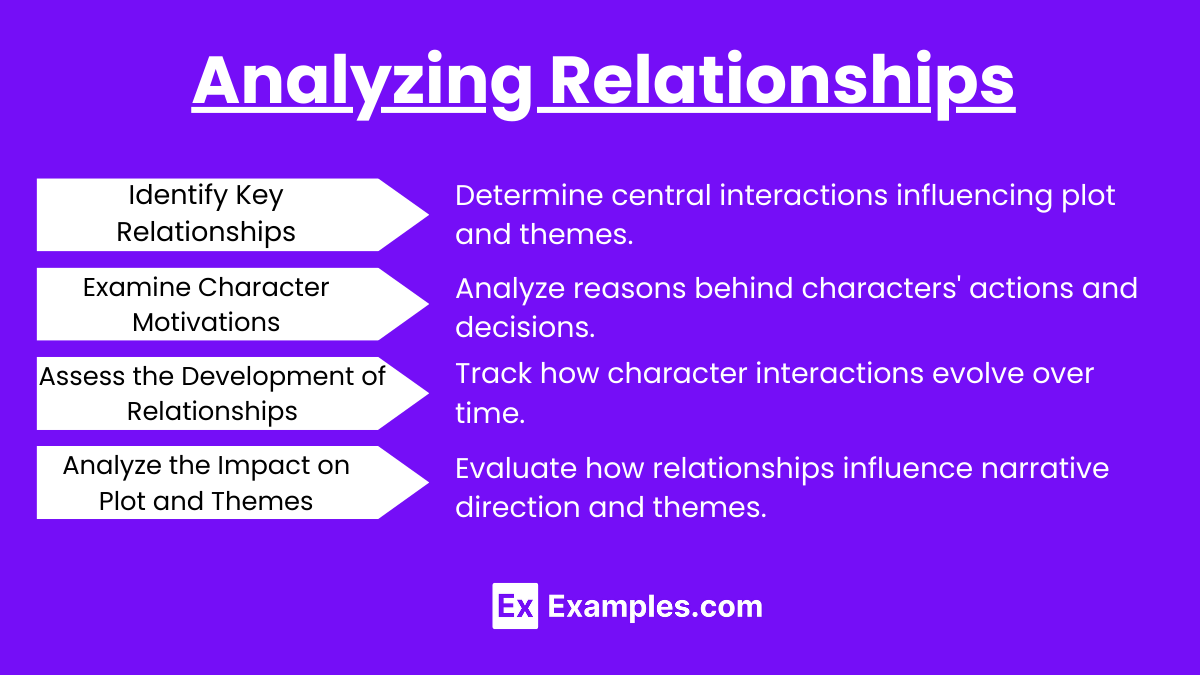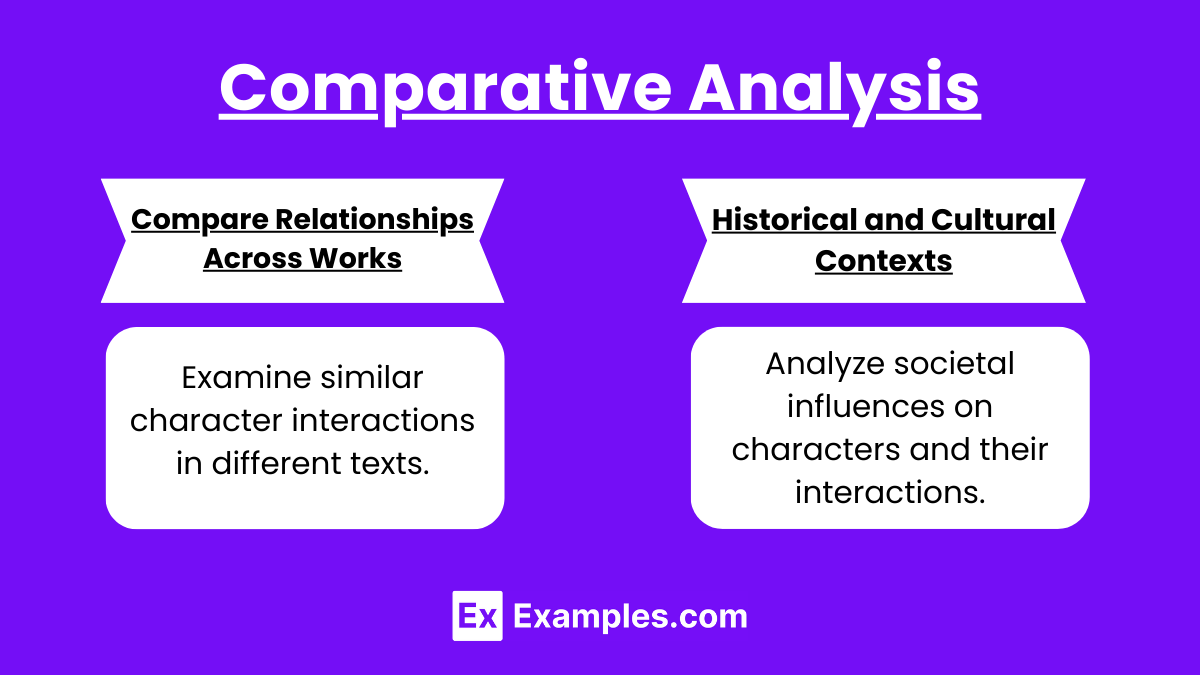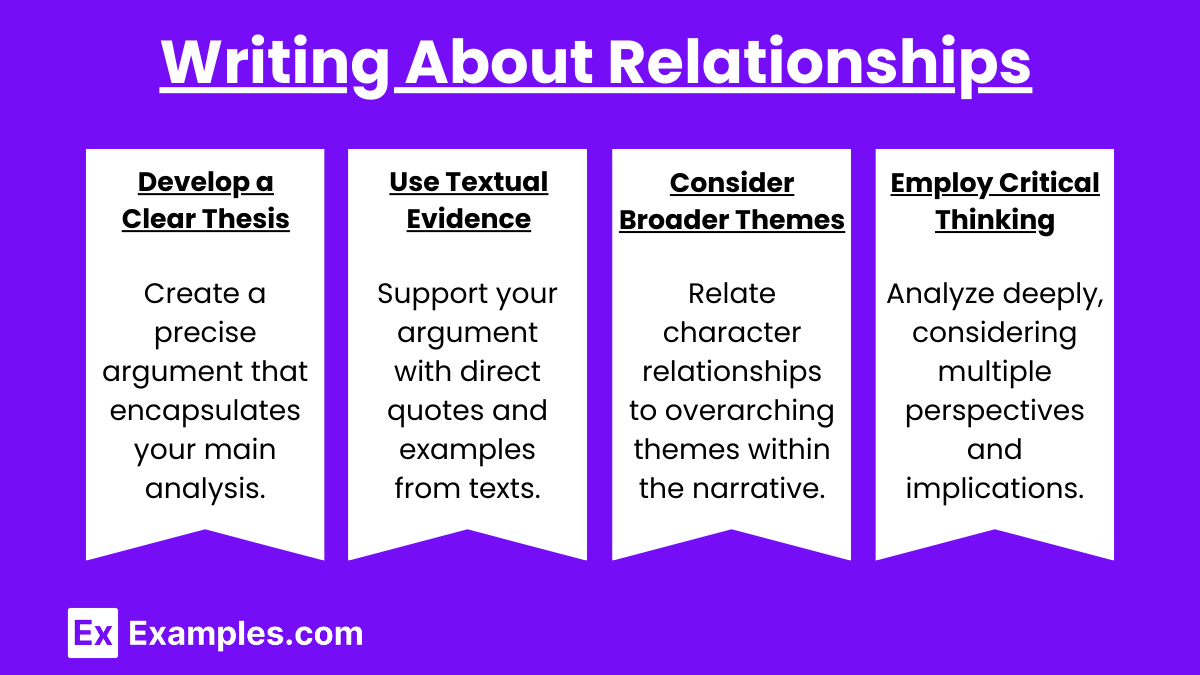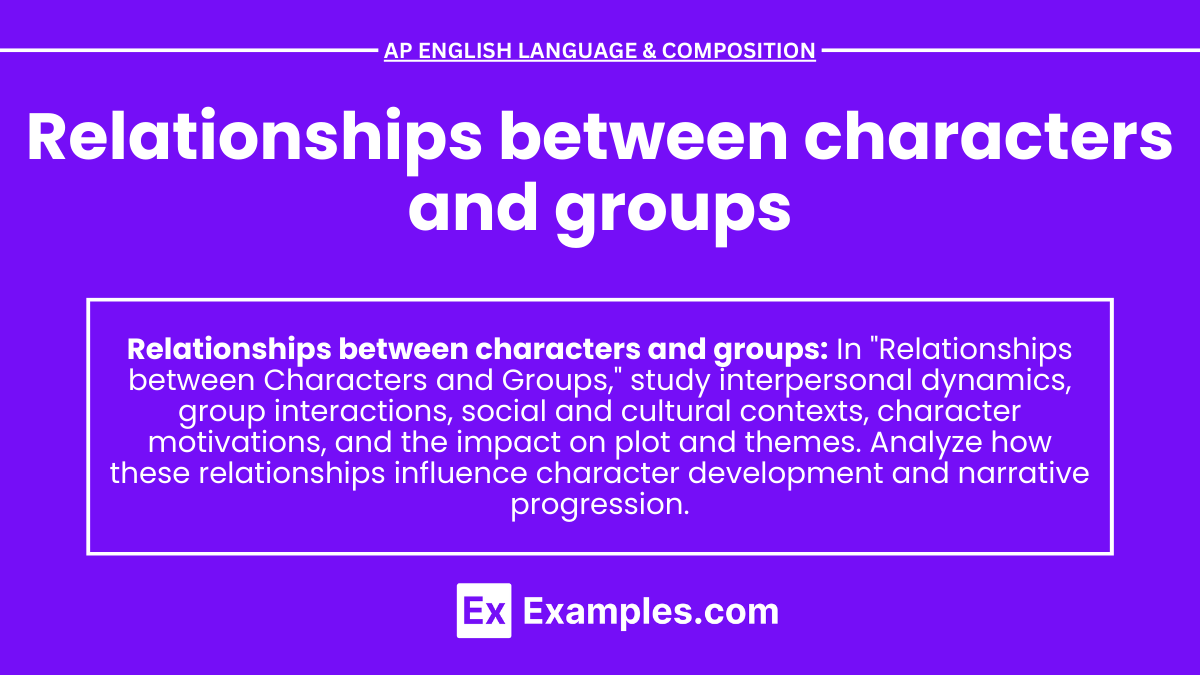In AP English Language and Composition, analyzing relationships between characters and groups is essential for understanding narrative dynamics. Crafting rhetorical sentences and cumulative sentences enhances your ability to discuss these interactions in argumentative speech and argumentative writing. Exploring character motivations and social dynamics helps build compelling arguments and enriches your literary analysis.
Learning Objectives
The learning objectives for analyzing relationships between characters and groups include mastering the use of cumulative sentences to develop detailed analyses, crafting explanatory essays and expository essays to elucidate character interactions, constructing rhetorical sentences for persuasive arguments, formulating a final thesis statement that encapsulates your analysis, and applying critical thinking to explore the significance and impact of these relationships in narrative development.
Key Concepts and Techniques
- Types of Relationships
- Interpersonal Relationships: Interactions between two or more characters, such as friendships, family bonds, and romantic connections.
- Group Dynamics: Interactions within a group, including social hierarchies, alliances, and conflicts.
- Character Roles and Functions
- Protagonists and Antagonists: Central characters driving the narrative and opposing forces creating conflict.
- Supporting Characters: Secondary characters who influence the main characters and contribute to plot development.
- Foils: Characters who contrast with the protagonist to highlight particular qualities or themes.
- Themes and Motifs
- Power and Authority: How power dynamics shape relationships and influence character actions.
- Loyalty and Betrayal: The impact of trust and deception on relationships.
- Love and Conflict: The complexities of romantic relationships and interpersonal conflicts.
- Social and Cultural Contexts
- Class and Social Status: How social hierarchies and class differences affect relationships.
- Cultural Norms and Values: The influence of cultural backgrounds on character interactions.
Analyzing Relationships

- Identify Key Relationships
- Determine the central relationships in the narrative and their significance to the plot.
- Analyze both positive and negative interactions to understand character dynamics.
- Examine Character Motivations
- Explore the motivations driving characters’ actions within relationships.
- Consider how personal desires, fears, and past experiences influence interactions.
- Assess the Development of Relationships
- Track how relationships evolve over the course of the narrative.
- Identify key moments that strengthen or weaken bonds between characters.
- Analyze the Impact on Plot and Themes
- Evaluate how relationships influence the overall plot and thematic development.
- Consider how changes in relationships reflect broader social or cultural themes.
Comparative Analysis

- Compare Relationships Across Works
- Examine similar types of relationships in different literary works.
- Analyze how different authors portray relationships and their significance.
- Historical and Cultural Contexts
- Consider how historical and cultural contexts shape relationships in various works.
- Analyze how relationships reflect societal values and issues of the time.
Writing About Relationships

- Develop a Clear Thesis
- Formulate a thesis statement that encapsulates your argument about the relationships.
- Ensure it addresses the nature, causes, and implications of the interactions.
- Use Textual Evidence
- Support your analysis with quotations and examples from the text.
- Explain how specific passages illustrate the relationships and their impact.
- Consider Broader Themes
- Relate the relationships to the broader themes and messages of the work.
- Analyze how the interactions contribute to the overall impact of the story.
- Employ Critical Thinking
- Engage in critical thinking to explore the deeper significance of the relationships.
- Consider multiple perspectives and interpretations.
Examples
- Interpersonal Relationships
- Elizabeth Bennet and Mr. Darcy in “Pride and Prejudice” by Jane Austen: Analyze their evolving relationship and how it reflects themes of class and social expectations.
- George and Lennie in “Of Mice and Men” by John Steinbeck: Explore their friendship and how it highlights themes of loneliness and the American Dream.
- Group Dynamics
- The boys in “Lord of the Flies” by William Golding: Examine how group dynamics and power struggles reflect themes of civilization and savagery.
- The families in “Romeo and Juliet” by William Shakespeare: Analyze the impact of family loyalty and conflict on the protagonists’ relationship.
- Power and Authority
- Ralph and Jack in “Lord of the Flies”: Explore how their struggle for power influences the group’s dynamics and the descent into chaos.
- Macbeth and Lady Macbeth in “Macbeth” by William Shakespeare: Analyze their relationship and how it drives the plot and themes of ambition and guilt.
- Loyalty and Betrayal
- Brutus and Caesar in “Julius Caesar” by William Shakespeare: Examine how betrayal affects their relationship and the plot’s outcome.
- Amir and Hassan in “The Kite Runner” by Khaled Hosseini: Analyze the themes of loyalty, betrayal, and redemption in their relationship.


